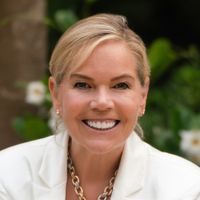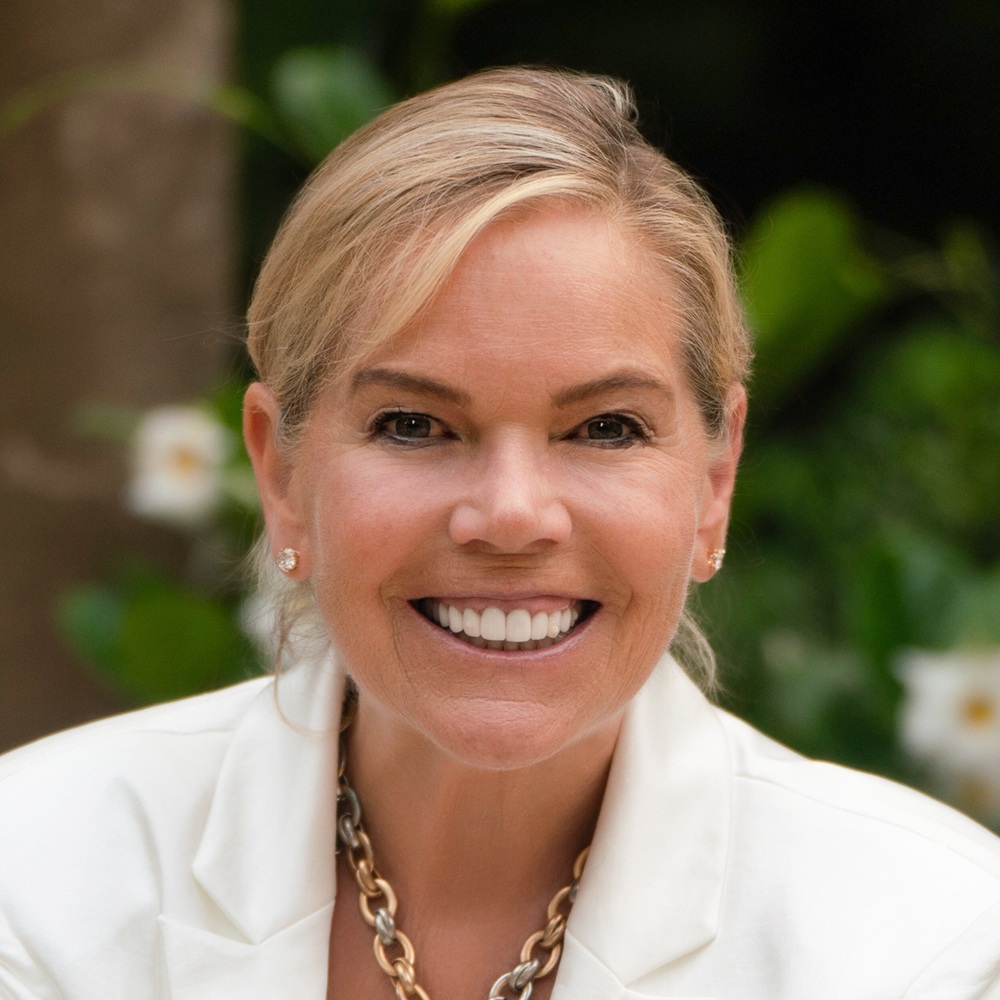What Fee-Only Financial Advice Really Means – and Why It Matters
You’ve probably heard the term “fee-only financial adviser," but maybe you don’t quite grasp how that works or why it’s far better than the alternatives. Here’s the real scoop on financial planning fees.


If you’re like many people who are considering hiring a fee-only fiduciary investment adviser, you might be wondering what does “fee-only” really mean, and why is it important? How much are these fees? What are they based on? What do they pay for, and how do I pay them?
You may have already started the conversation with an adviser but found yourself trying to make your needs fit their fees, rather than the other way around. But people are more curious now about how advisers charge and they’re asking for fee flexibility and accountability. They often know what they want: an adviser to help them figure out how to balance their monthly cash flows. How to save effectively for retirement and college. How to reduce their tax liability. How to protect the value of their assets. People who are about to retire often seek out advice from a fiduciary to help make sure they won’t run out of money during retirement, or learn how to shield as much as the wealth they pass onto their children (or charitable causes) as possible from Uncle Sam.
Fee-only investment advisers have been slow to adjust their fee structures, but the demand is moving many to relax their assets under management requirements. Fee-only advisers provide holistic, comprehensive financial planning services. Sometimes they offer them as stand-alone offerings. Sometimes they offer flexible fee arrangements as part of the overall suite of services they provide for their investment management clients. And, as savvy consumers demand to know exactly what they’re paying for, fee-only advisers have been gradually shifting to more flexible fee payment arrangements to provide a higher level of transparency.
From just $107.88 $24.99 for Kiplinger Personal Finance
Be a smarter, better informed investor.

Sign up for Kiplinger’s Free Newsletters
Profit and prosper with the best of expert advice on investing, taxes, retirement, personal finance and more - straight to your e-mail.
Profit and prosper with the best of expert advice - straight to your e-mail.
But before we discuss these evolving fee structures, let’s make sure we’re all on the same page as to what “fee-only” means — and why it’s so much better than the alternatives.
Fee-only is about your interests, all the time
When you hire a fee-only fiduciary investment adviser to manage your investments, develop a financial plan, or both, you alone are paying a financial professional who is legally and professionally committed to acting solely in your best interests — otherwise known as the fiduciary standard. They don’t get paid by investment or insurance companies to sell their products.
Compare them to registered representatives, or brokers, who earn their living on commissions they receive for trading stocks or selling you expensive mutual funds, annuities and insurance. Because they’re legally allowed to recommend products that offer them highest payouts, brokers can’t honestly claim to be fiduciaries.
And don’t confuse fee-only advisers with fee-based advisers, who are registered as both investment advisers and brokers. Why is this distinction important? Because fee-based advisers can earn commissions for selling life insurance or annuities to the same clients who pay them a fee for investment management services. The potential conflicts of interest in this model prevent them acting as genuine fiduciaries.
OK, so, now that we’ve established what “fee-only” means, let’s talk some more about those fees.
Financial planning fees
Financial planning fees are based on complexity and time spent to develop a detailed plan. You can expect a fee-only adviser to analyze your current and projected income and expenses (cash flow needs), and your short- and long-term financial goals and recommend ways to balance saving and spending, shrink your debts, reduce your tax bill, protect your assets and optimize your investments. Most of these advisers are CERTIFIED FINANCIAL PLANNERTM (CFP®) professionals.
The fee for an adviser to set up a financial plan starts at around $1,500. More complicated plans that involve estate and tax planning can run $15,000 or more. Once you have the plan, you can then implement the investment recommendations yourself or ask the adviser to execute and manage your portfolio. Many advisers waive the cost of a financial plan if you hire them to manage your assets.
Investment management fees
Investment advisers tend to charge an annual fee based on the value of the assets they manage for you — known as assets under management (AUM)-based fees.
These fees pay for a variety of tasks the adviser carries out on your behalf, including:
- Recommending a targeted mix of stock and bond investments based on your financial objectives and risk tolerance.
- Researching and selecting investment options for your portfolio.
- Placing trades.
- Monitoring and reporting performance.
- Periodically rebalancing your account to its original investment mix.
They’ll also help minimize the tax consequences of any withdrawals you make from your account and calculate annual required minimum distributions (RMDs) from your IRA.
For these services most advisers charge AUM-based fees between 1.08%-1.15% for portfolios of $500,000 or less to just under 1% for portfolios of $1 million, with additional discounts (known as breakpoints) for larger portfolios. Ideally, these fees should never remain static: As your portfolio increases in value, your adviser should lower their fee percentage accordingly, since they shouldn’t be charging more money if they’re not changing the way they manage your wealth.
You’ll pay the adviser fees from your bank or from a separate cash or money market account your adviser sets up for you. No responsible adviser will ever sell any of your invested assets to pay for their fees unless you specifically ask them to.
Blended fee structures
In response to consumers’ increasing demands for customized packages of financial planning that include investment management, advisers are offering more flexible fee arrangements, particularly for clients whose assets they’re not directly managing. Some are charging hourly fees, which range from $150-$500 per hour or higher. Others are charging an annual retainer of anywhere from $2,000-$100,000 a year to provide financial planning.
Advisers are becoming even more fee-flexible when clients hire them for financial planning and investment management. According to a recent Wealthramp survey of 100 fee-only advisers, 57% said they now give their clients the option of paying flat fees or annual retainers or AUM-based fees — or, in many cases, a combination of both.
John Swee, CFP®, a fee-only investment adviser at Gryphon Advisers in Evanston, Ill., offers a unique hybrid approach where both financial planning and investment management fees are based on assets under management. Recognizing that addressing his clients’ complex financial challenges takes more time and effort than managing their portfolios, he’ll often charge a higher retainer fee for financial planning and a deeply discounted investment management fee.
“For example, for a client with $5 million in assets invested in a standard mix of index funds who has a complex set of yearly tax, retirement income, estate and insurance planning needs, I might charge 0.50% ($25,000) a year for financial planning services and 0.25% ($12,500) a year for investment management. While I give them the choice of whether they want to pay these fees at once or in quarterly installments, I always invoice these fees separately so they know exactly what they’re paying,” says Swee.
Clients who want their fee-only investment adviser to offer both financial planning and investment management should ask if they offer fixed retainers or hourly fees as an alternative to AUM-based fees. They may be more flexible if you’re willing to let them invest your money following a standard asset allocation model. If you want them to build a customized portfolio of stocks, bonds, real estate and alternative investments they may only offer the AUM-based fee model since these portfolios require a higher level of fiduciary oversight.
While paying an adviser thousands of dollars for these services may seem expensive, these fees may often pay for themselves if the adviser saves you tens of thousands of dollars in hidden investment costs by moving your money into lower-cost mutual funds and ETFs or if their guidance on exercising stock options or taking distributions from your retirement accounts helps you avoid taking a huge tax hit.
Additional expenses
Remember, you’re only paying the adviser for their advice. But since your stocks, bonds, ETFs and cash are held at an outside custodian, such as Fidelity or Schwab, that custodian will charge annual account maintenance fees as well as one-time fees for trades, wire and electronic funds transfers, check-writing and other transactions. Fortunately, advisers get deep discounts on these fees that they’re able to pass on to their clients. In any case, you’ll see all of these fees listed on your account statements.
What won’t be listed are investment management fees charged by mutual funds and ETFs in your account. That’s why part of a fee-only fiduciary adviser’s role is to research and recommend fund options that offer strong performance at reasonable costs.
Finding fee facts
All investment advisers are required to disclose their fees in Part 2 of their firm’s Form ADV, a registration document that must be filed with the SEC and provided to all clients and prospects. You can also download it from their firm’s listing on https://adviserinfo.sec.gov/.
Any trustworthy fee-only adviser will answer your questions about their fees in a straightforward manner. And remember that you don’t necessarily have to accept their quote at face value. If they want to have you as a client, you may be in the driver’s seat to negotiate a fee arrangement that meets you where you want to be.
Related Content
- How to Cut Your Investment Fees in Half
- How to Spot (and Squash) Nasty Fees That Hide in Your Investments
- Did You Know Your Financial Adviser Can ‘Fire’ You as a Client? Here Are 6 Times When They Should
Profit and prosper with the best of Kiplinger's advice on investing, taxes, retirement, personal finance and much more. Delivered daily. Enter your email in the box and click Sign Me Up.

With more than 25 years in investor advocacy, Pam Krueger is the founder and CEO of Wealthramp, an SEC-registered adviser matching platform that connects consumers with rigorously vetted and qualified fee-only financial advisers. She is also the creator and co-host of the award-winning MoneyTrack investor-education TV series, seen nationally on PBS, and Friends Talk Money podcast.
-
 Dow, S&P 500 Slip on December Rate Cut Worries, Nvidia Boosts Nasdaq: Stock Market Today
Dow, S&P 500 Slip on December Rate Cut Worries, Nvidia Boosts Nasdaq: Stock Market TodayNvidia became the first company ever to boast a $5 trillion market cap, but it wasn't enough to lift the Dow and the S&P 500.
-
 Where You Choose to Stash $100k Now Comes with a Big Opportunity Cost
Where You Choose to Stash $100k Now Comes with a Big Opportunity CostThe Fed recently cut rates. Here's where to maximize your savings while rates remain higher.
-
 I'm a CPA: Control These Three Levers to Keep Your Retirement on Track
I'm a CPA: Control These Three Levers to Keep Your Retirement on TrackThink of investing in terms of time, savings and risk. By carefully monitoring all three, you'll keep your retirement plans heading in the right direction.
-
 Debunking Three Myths About Defined Outcome ETFs (aka Buffered ETFs)
Debunking Three Myths About Defined Outcome ETFs (aka Buffered ETFs)Defined outcome ETFs offer a middle ground between traditional equity and fixed-income investments, helping provide downside protection and upside participation.
-
 This Is Why Judge Judy Says Details Are Important in Contracts: This Contract Had Holes
This Is Why Judge Judy Says Details Are Important in Contracts: This Contract Had HolesA couple's disastrous experience with reclaimed wood flooring led to safety hazards and a lesson in the critical importance of detailed contracts.
-
 A Lesson From the School of Rock (and a Financial Adviser) as the Markets Go Around and Around
A Lesson From the School of Rock (and a Financial Adviser) as the Markets Go Around and AroundIt's hard to hold your nerve during a downturn, but next time the markets take a tumble, remember this quick rock 'n' roll tutorial and aim to stay invested.
-
 I'm a Financial Pro: This Is How You Can Guide Your Heirs Through the Great Wealth Transfer
I'm a Financial Pro: This Is How You Can Guide Your Heirs Through the Great Wealth TransferFocus on creating a clear estate plan, communicating your wishes early to avoid family conflict, leaving an ethical will with your values and wisdom and preparing them practically and emotionally.
-
 To Reap the Full Benefits of Tax-Loss Harvesting, Consider This Investment Strategist's Steps
To Reap the Full Benefits of Tax-Loss Harvesting, Consider This Investment Strategist's StepsTax-loss harvesting can offer more advantages for investors than tax relief. Over the long term, it can potentially help you maintain a robust portfolio and build wealth.
-
 Social Security Wisdom From a Financial Adviser Receiving Benefits Himself
Social Security Wisdom From a Financial Adviser Receiving Benefits HimselfYou don't know what you don't know, and with Social Security, that can be a costly problem for retirees — one that can last a lifetime.
-
 Take It From a Tax Expert: The True Measure of Your Retirement Readiness Isn't the Size of Your Nest Egg
Take It From a Tax Expert: The True Measure of Your Retirement Readiness Isn't the Size of Your Nest EggA sizable nest egg is a good start, but your plan should include two to five years of basic expenses in conservative, liquid accounts as a buffer against market volatility, inflation and taxes.